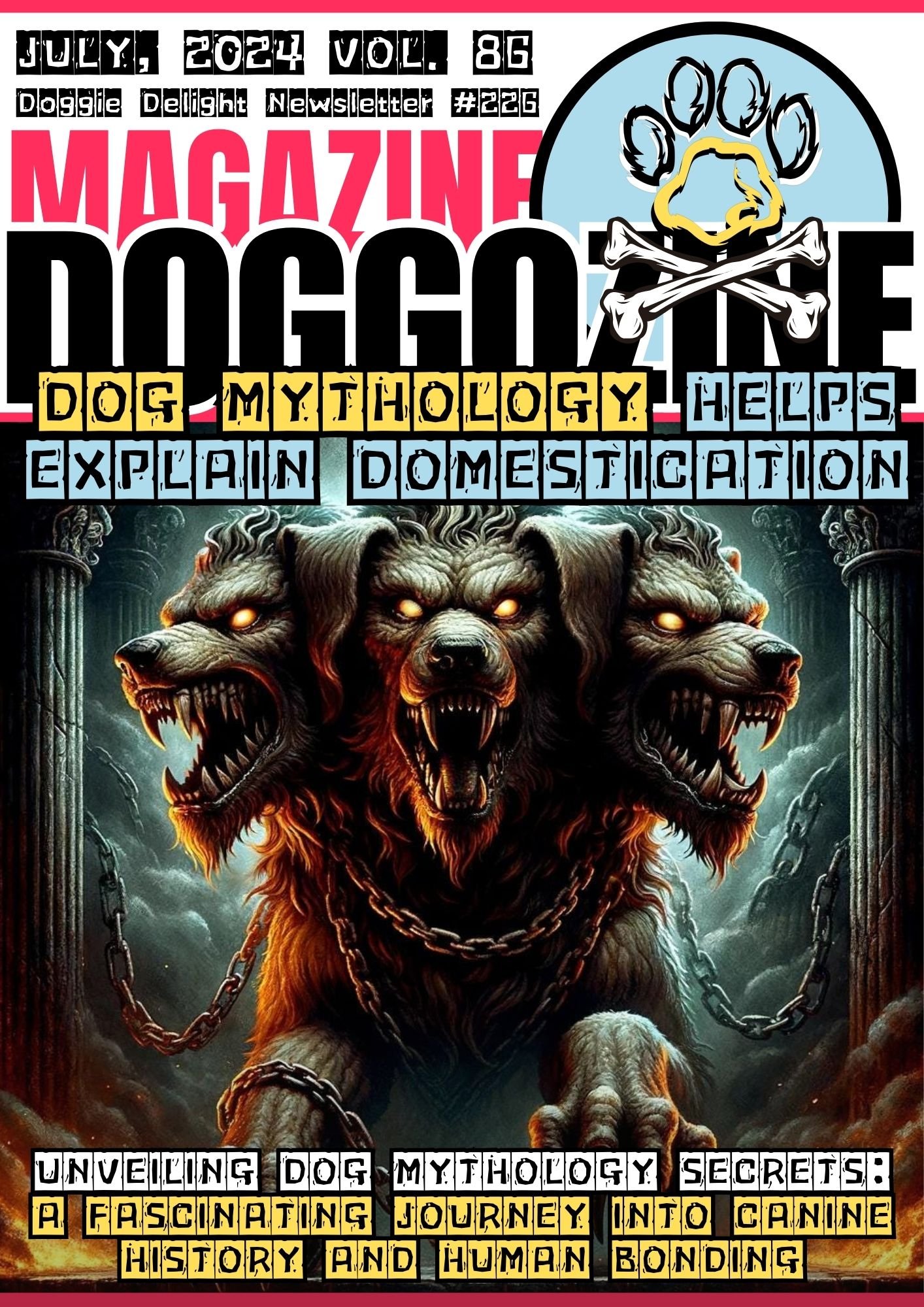
UNVEILING DOG MYTHOLOGY SECRETS: A FASCINATING JOURNEY INTO CANINE HISTORY AND HUMAN BONDING
Have you ever wondered about the captivating history and profound bond between humans and their canine companions? This is a fascinating journey. It delves into the secrets of Dog Mythology. It unveils a world where ancient narratives intertwine with research by historian Julien D’Huy.
Starting at dog folklore and mythology to human migration, from ancient civilizations to modern societies
As we explore this mythological realm, we’ll uncover how dogs evolved from symbolic beings to practical aids. We’ll trace back to the earliest known ancestors of the gray wolf.
Join us as we connect the dots between dog folklore, human migration patterns, and the mystical significance of our canine counterparts. From ancient civilizations to modern societies, this blog will explore the cultural heritage science behind our timeless connection with dogs.
It will shed light on their behavior, symbolism, and pivotal role in shaping human history. Step into the world of Dog Mythology. Embark on a journey of discovery unlike any other.
Dog Mythology as a Historical Lens
The allure of this myth is its ability to shed light on the cultural heritage science behind the journey of man’s best friend. Dog mythology serves as a powerful lens. Through this lens, we can examine the intricate relationship between humans and dogs throughout history. By delving into the rich tapestry of stories, legends, and beliefs surrounding dogs, we gain a deeper understanding of how our ancestors perceived and interacted with these remarkable creatures.
From ancient tales of loyal guardians to mythical accounts of divine canines, these narratives offer valuable insights into the cultural significance of dogs across different civilizations. Exploring dog myths allows us to trace the evolution of human-canine bonds over time. These stories reveal how dogs transitioned from symbolic representations to practical companions. They highlight the crucial roles dogs played in various aspects of human life, such as hunting, protection, and companionship.
Additionally, dog mythology provides a window into the beliefs, values, and traditions of past societies. It showcases how different cultures wove dogs into their spiritual and social fabric, attributing them with mystical powers or revering them as sacred beings. Dogs hold a special place in many cultures. Their stories reveal how we view them. For instance, in African folklore, Rukuba the dog shows loyalty. He protects his owner during danger, even sacrificing his life. Such tales highlight the strong bond between humans and dogs across time and cultures.
The Power of Dog Mythology in Uncovering Cultural Attitudes
Mythological stories don’t just entertain. They reveal the values, fears, and hopes of the societies that created them. By studying recurring themes and symbols in dog myths, researchers gain insights into how different cultures saw dogs’ roles in their lives. These myths offer a window into our shared history with canine companions.
Bridging the Gap between Dog Mythology and Science
While myths seem far from science, they provide valuable context for archaeological and genetic evidence about dog domestication. Comparing myths across cultures and tracing their evolution uncovers patterns and connections. This sheds light on the journey of how dogs became “man’s best friend” through the ages. Myths complement scientific study, bridging ancient narratives with modern research.
🔑 Key Points: Dog mythology is a powerful tool for understanding our cultural heritage and the evolutionary bond with canines. It bridges the gap between ancient tales and current scientific discoveries about the history of dog domestication.
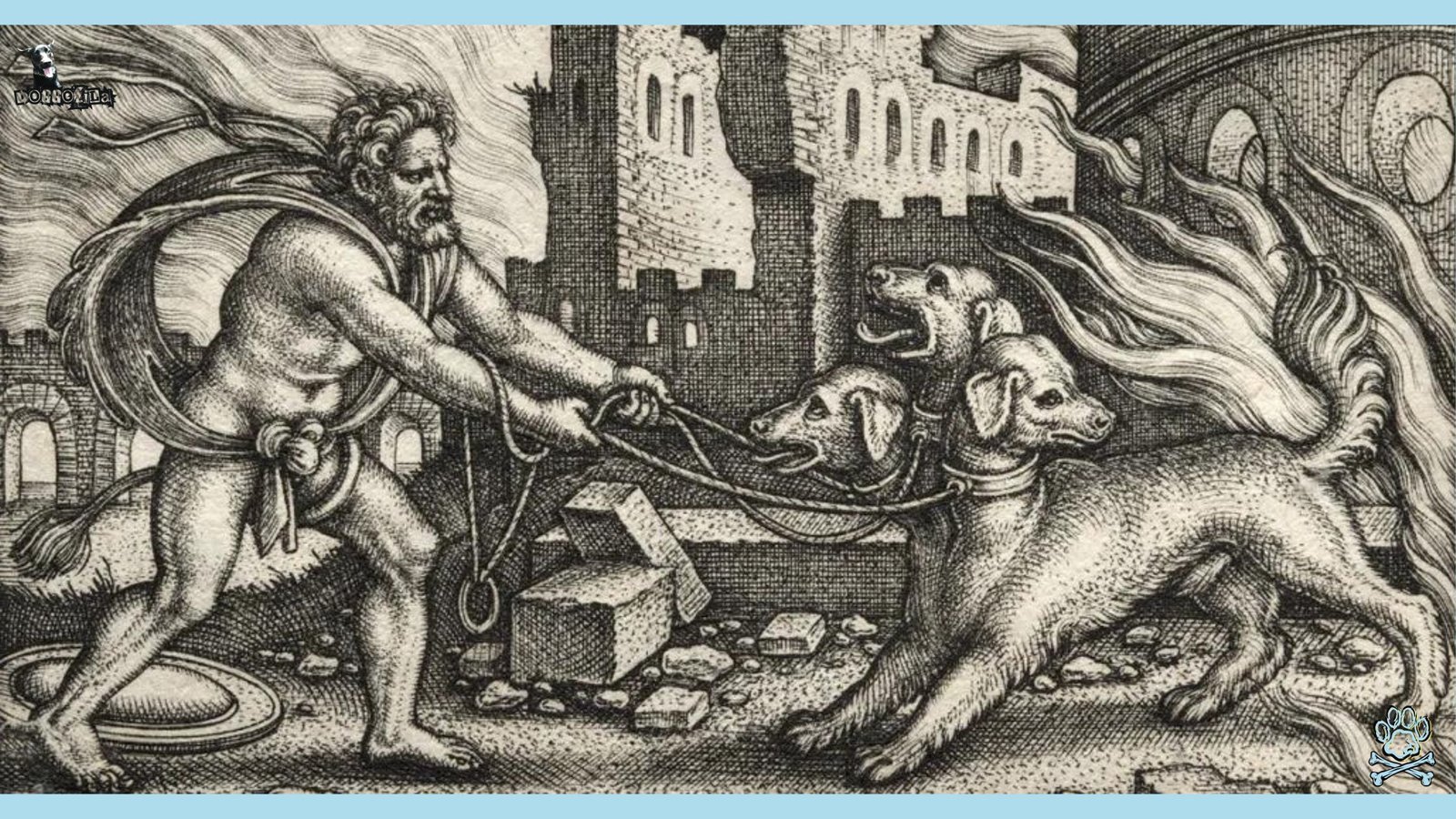
CORE STORIES IN DOG FOLKTALES AND MYTHOLOGY
At the heart of dog mythology lies a set of core stories captivating human imagination for centuries. These tales often revolve around loyalty, sacrifice, and companionship – offering a glimpse into the enduring bond between humans and dogs. They explore the unique relationship we’ve developed with our canine friends through generations. There was an ancient Roman historian named Strabo. He told a story about a dog. This dog wouldn’t leave its master’s side, even after the master died. This shows the unwavering loyalty that dogs are famous for.
The Afterlife and The Symbolic Significance of Breed Characteristics
Many cultures believed dogs guided souls to the afterlife. In ancient Egypt, Anubis was the god of the dead. He had a dog’s head. People thought Anubis escorted souls after death. He guarded tombs of the deceased too.
Different dog breeds have symbolic meanings in folktales. Terriers stand for bravery and determination. Their tenacious nature inspired these meanings. Breed traits shaped how people viewed dogs symbolically.
🔑 Key Points: Dog stories show the cultural importance of dogs. Dogs played key roles in afterlife beliefs and breed symbolism.
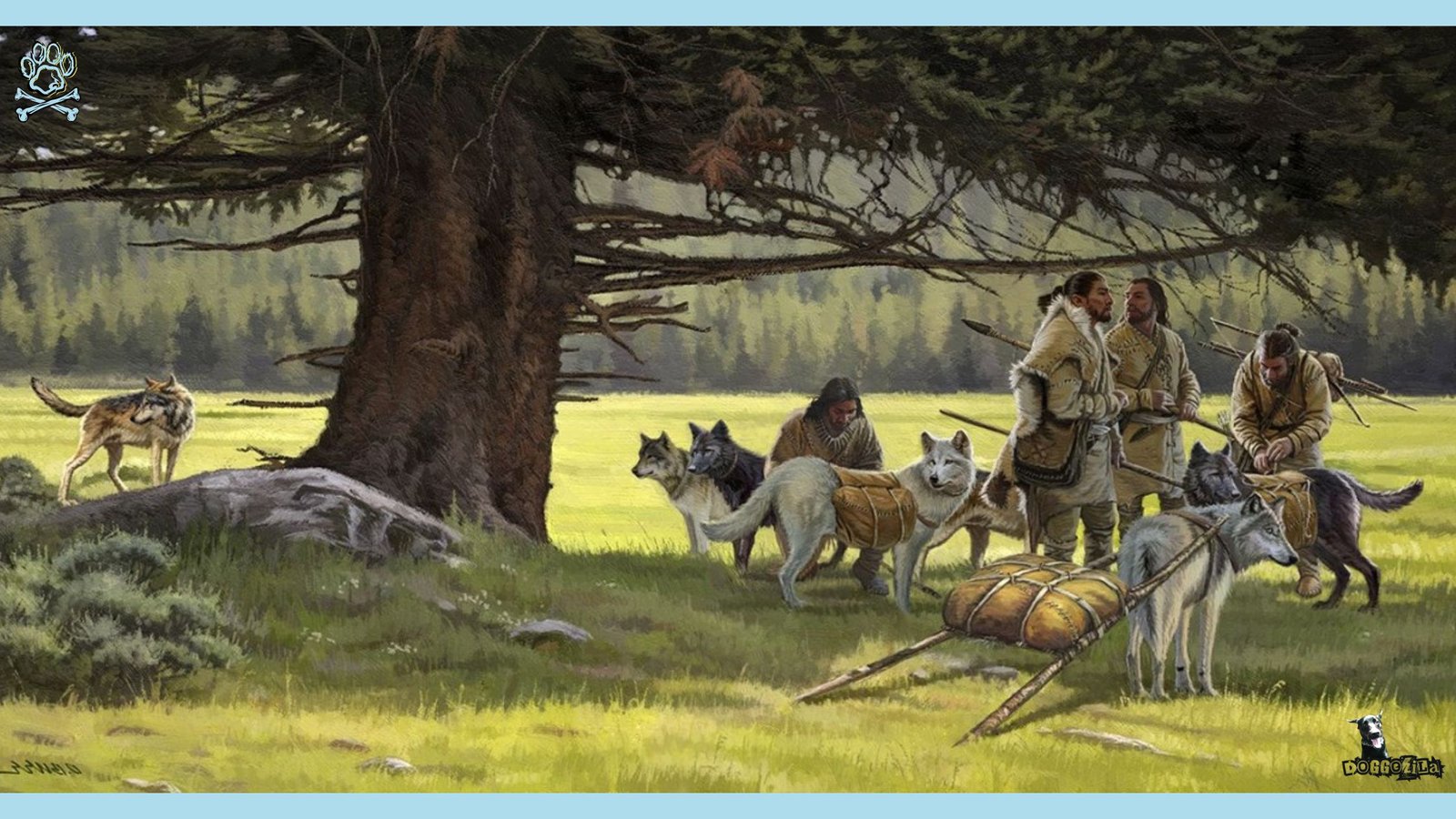
LINKING DOG MYTHOLOGY WITH HUMAN MIGRATION
Dog myths reveal ancient migration patterns. As people moved, they carried stories and beliefs about dogs. These traveled with them across lands. Dog folklore traces the journeys of past civilizations. Dogs have been part of human life for a very long time. By studying myths about dogs from different regions, researchers can learn how these stories spread as people migrated. This helps us understand how cultures are connected and the role dogs played.
The Journey of the First Dogs
Researchers continue to study where dogs first came from. But myths give clues about the earliest dogs. Many cultures have stories about the first dogs descending from wolves or other wild canids.
For instance, some Native American people have legends about the “First Dog.” These stories say the First Dog came from a wolf and a human. The stories show the close ties between dogs and wolves. They also suggest that beliefs and practices influenced how dogs were domesticated.
Tracing the Common Ancestor of Present-Day Wolves
Genetic research shows that today’s dogs and wolves share an ancient ancestor from thousands of years ago. By comparing DNA from modern dogs and ancient canine remains, scientists can trace the evolutionary history of our canine companions.
Studying the similarities and differences in dog myths across regions provides insights. It helps piece together an understanding of how human cultures are interconnected. It also sheds light on the significant role dogs played in shaping these cultures over time.
Interestingly, some ancient stories seem to match scientific findings. They show that dogs and wolves come from the same family. This suggests that both cultural tales and scientific evidence are important in understanding how dogs became domesticated.
🔑 Key Points: Myths about dogs give us clues about how ancient people moved around. They also help us learn about the history of dogs evolving from wolves. These stories work well with modern genetic research.
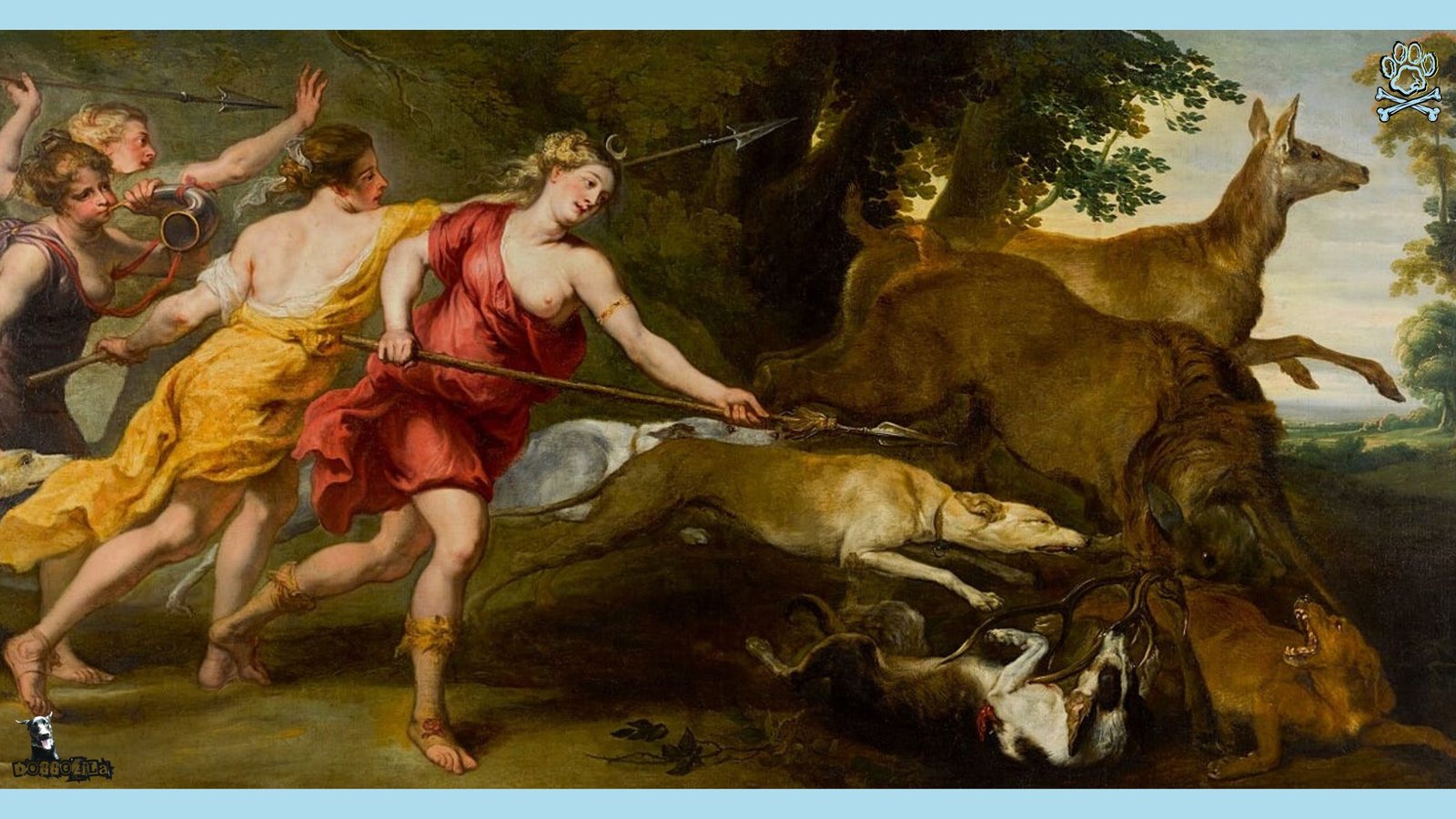
EVOLUTION OF DOG’S ROLE FROM SYMBOLIC TO PRACTICAL AIDS
Throughout history, the role of dogs has changed a lot. Early myths often showed dogs as symbols or spiritual guides. But evidence shows that over time, dogs became more useful in everyday life. One early example is a dog skeleton buried with human remains from long ago. This shows that people valued dogs not just for symbolism, but also as helpers for hunting and protection.
The First Domesticated Animal
Dogs were the first animals that humans domesticated. This process started around 15,000 years ago. The early bond between people and dogs set the path for a relationship that would keep growing stronger over many years.
As people lived together and formed various societies, dogs took on different roles. Dogs helped with hunting and herding. They also served as loyal guards and beloved pets. Dogs showed how versatile and adaptable they are in many situations.
The Emergence of Specialized Roles and The Enduring Legacy of the Human-Dog Bond
As civilizations advanced, dogs had more specialized roles. In ancient Rome, dogs were trained for many purposes like hunting, guarding, and even carrying messages. Ancient Roman coins often showed dogs in specific roles or with certain gods. This shows the specialization of dogs at that time.
Even as societies changed over time, humans and dogs stayed bonded. Ancient myths and modern stories show the lasting power of this relationship. It fascinates and inspires us.
🔑 Key Points: The evolution of dogs’ roles from symbolic to practical reflects the deepening bond between humans and their canine companions. This relationship has endured and adapted throughout history.
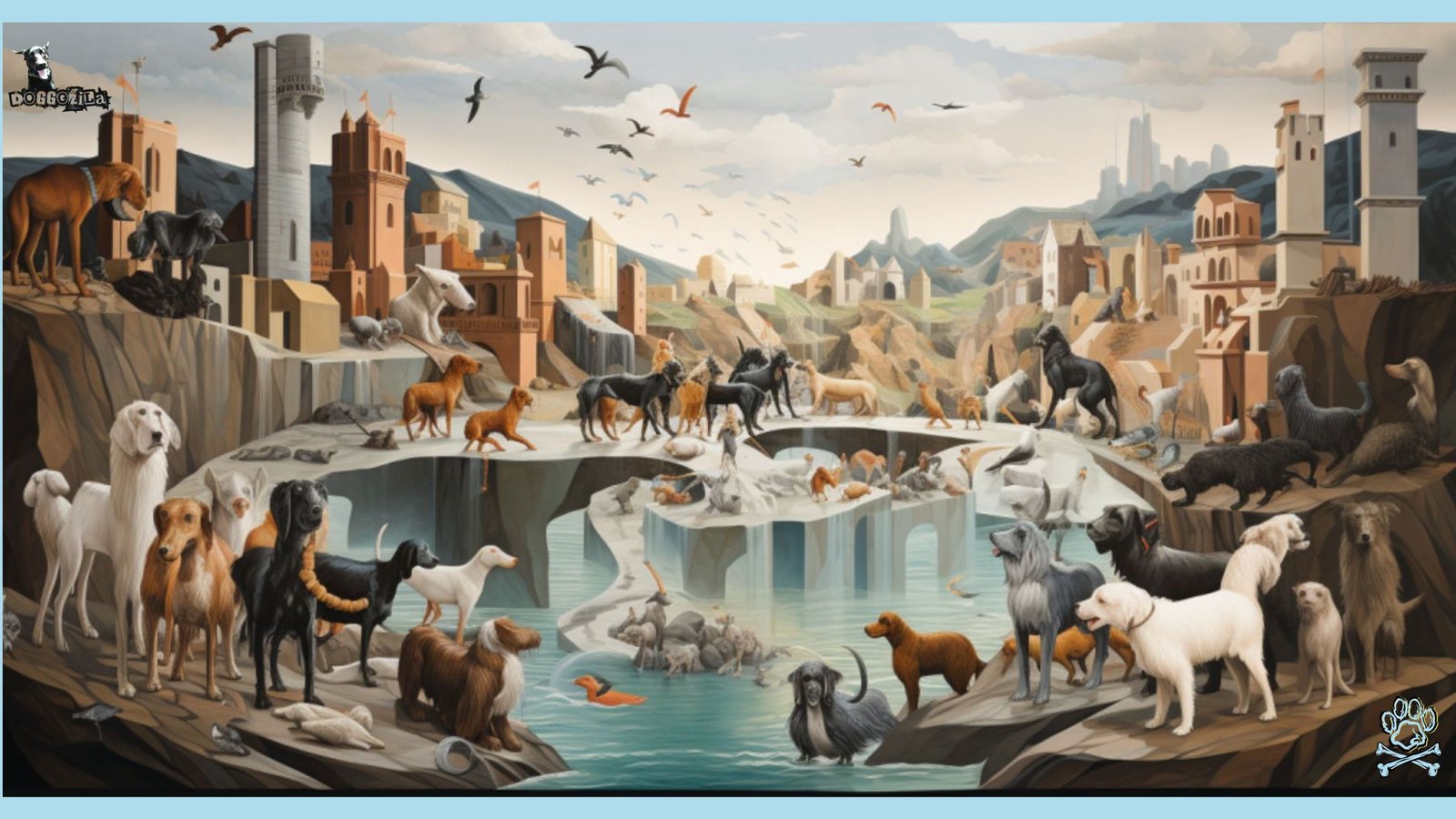
RESEARCH IMPLICATIONS FOR DOG DOMESTICATION STUDIES
Studying dog mythology helps us understand how dogs were domesticated. It also sheds light on the historical relationship between humans and dogs. By examining cultural stories about dogs, researchers gain valuable insights. These complement findings from archaeological and genetic studies. Dogs have been human companions for thousands of years. While practical reasons like hunting and protection played a role, there may have been deeper cultural factors behind early dog domestication. Mythological analysis can shed light on these motivations.
Unraveling the Mysteries of Early Dog Domestication
Fossils show dogs lived with humans long ago. But they don’t reveal emotional bonds. Myths offer clues about how early humans viewed dogs. Examining themes like loyalty and companionship in dog myths helps us understand the domestication process better.
Early humans likely valued dogs for more than just practical uses. Dog myths suggest a close bond existed. Dogs were seen as loyal friends and family members. Their presence brought comfort and joy. Studying myths gives a richer picture of human-dog dynamics in the past.
Bridging the Gap between Science and Culture
Looking at myths enriches scientific study of dog domestication. It bridges science and cultural heritage. Researchers gain a more complete view by considering cultural narratives about dogs.
This approach deepens our knowledge of the past human-dog relationship. It also impacts the present and future. Understanding dogs’ cultural significance strengthens our bond with them today. Myths remind us dogs are more than just practical helpers – they are cherished companions.
Overall, mythological analysis offers valuable insights into the motivations and emotions surrounding early dog domestication. It complements scientific evidence, giving a fuller picture of this important milestone in human-animal relationships.
🔑 Key Points: Studying myths about dogs gives us ideas about why and how people first tamed dogs. This cultural knowledge adds to scientific findings and connects research to heritage.
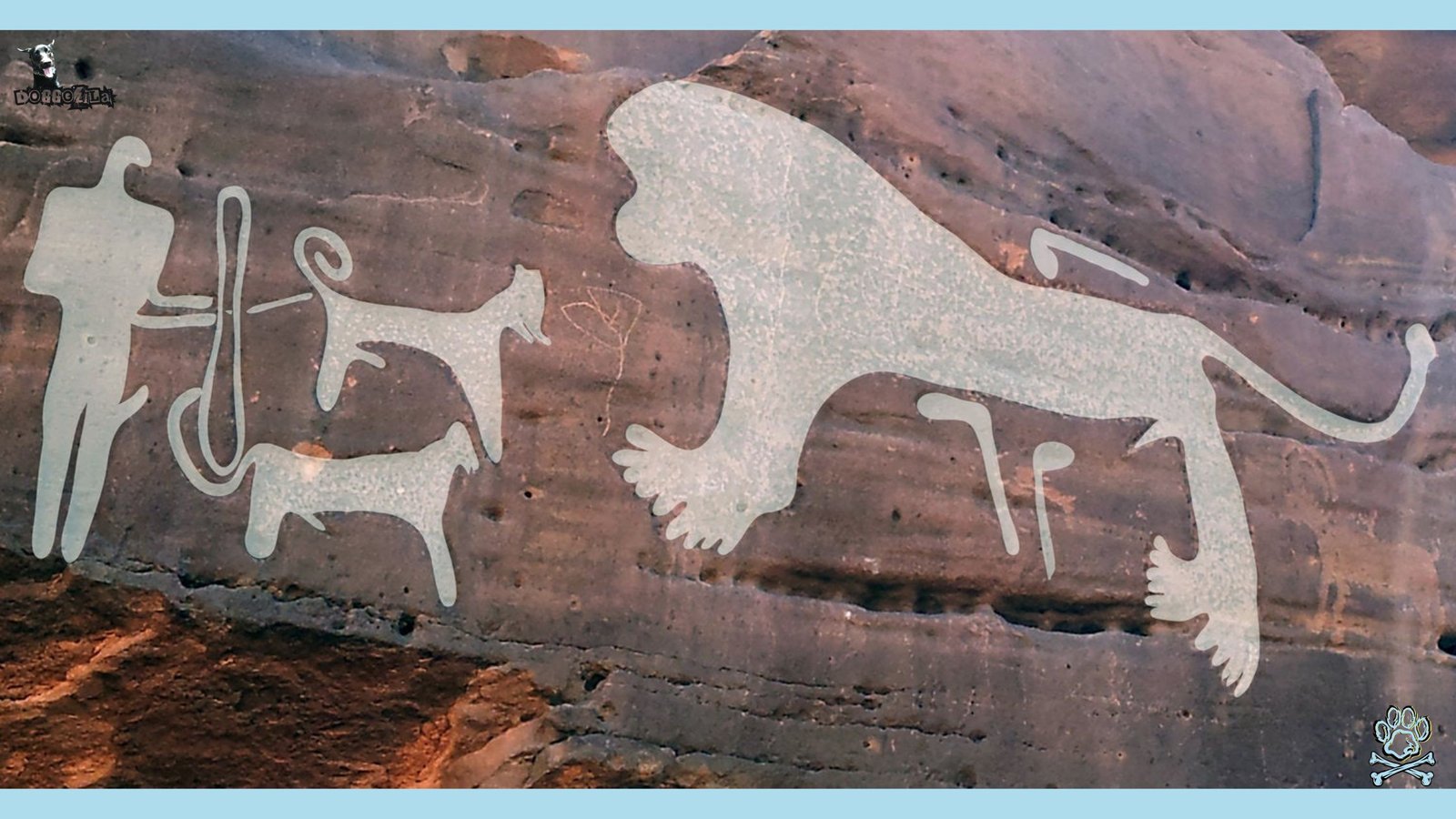
TRACING THE FIRST DOGS BACK TO THEIR EARLIEST ANCESTORS
The first known ancestors of today’s pet dogs were gray wolves. Gray wolves evolved around 1.8 million years ago. But there’s still debate over exactly when and how wolves were first domesticated into dogs. A major discovery was a Paleolithic dog skeleton found in Siberia. This skeleton is about 33,000 years old. Finds like this prove dogs lived with humans a very long time ago.
Nikolai D. Ovodov’s Role in Studying Ancient Dogs
Russian scientist Nikolai D. Ovodov studies about the ancient dog remains. He looks at old dog skeletons to learn about their body shapes and evolution. His work shows how the earliest dogs differed from modern dogs. It gives clues about the earliest stages of domesticating dogs.
🔑 Key Points: Finding fossils of very old dogs, like the work of Ovodov, teaches us about the long history of humans and dogs living together. It reveals details about the ancestors of our pet dogs today.
A Bond Written in the Stars: Dogs and Human Connection
The special tie between dogs and people isn’t just on Earth. It’s also seen in the stars above. Many cultures connected dogs to stars in stories. These tales show dogs’ deep importance to humans. One big example is linking dogs to Sirius, the “Dog Star.” In Greek myths, Sirius was the dog of Orion the hunter. It faithfully followed its master across the night sky.
The Significance of Sirius in Dog Mythology and The Enduring Power of the Human-Dog Bond
Sirius appearing meant big events or seasons changing. In ancient Egypt, Sirius rising meant the Nile would flood yearly. This flood was crucial for farming and life. This star link reflects how deeply woven dogs are into human culture and myths. They were helpers and spiritual companions.
The bond between humans and dogs, seen in the stars, shows this tie’s lasting power across time and space. It reminds us our link with these amazing creatures isn’t just practical. It also has cosmic significance.
🔑 Key Points: Dogs have been connected with stars and celestial bodies like Sirius. This reflects the deep cultural and spiritual importance of dogs. It highlights the powerful, lasting relationship between humans and dogs across time and place.
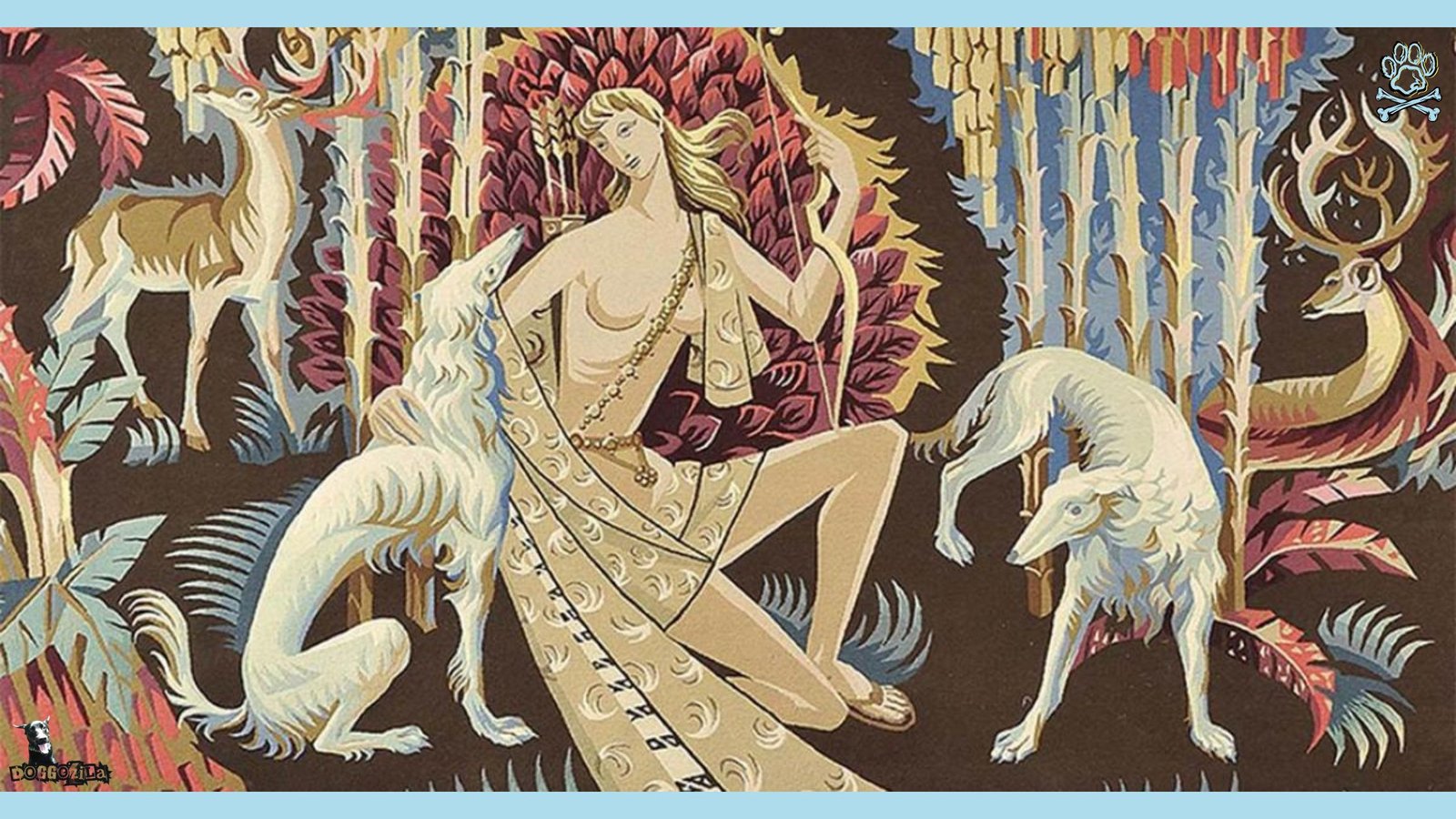
MYSTICAL GUARDIAN DOGS: SYMBOLISM ACROSS CULTURES
Throughout history, dogs have been revered as mystical guardians. They have symbolic meanings beyond their practical roles. Across diverse cultures, from ancient China to the Mediterranean, dogs have been symbols of protection, loyalty, and spiritual guidance. In ancient China, people believed dogs had the power to ward off evil spirits. They could protect the home from malevolent forces. This belief is shown by the popularity of dog figurines and statues. These were often placed at the entrances of homes and temples as symbolic guardians.
The Perspective of Ancient Roman Historians
Ancient Roman historians, like Strabo, give insights into the symbolic importance of dogs in the classical world. Strabo wrote about the role of dogs in religious ceremonies. He wrote about their association with certain deities, like the goddess Hecate. She was often depicted with a pack of ghostly hounds. These accounts highlight how dogs were valued not just for practical abilities. They were also revered for their mystical and spiritual qualities.
The Enduring Legacy of Dog Symbolism and Mythology
The symbolism of dogs as mystical guardians has lasted for centuries. It still resonates today. The popularity of dog tattoos as protection symbols shows this. As do the continued presence of dog statues in various cultural contexts. The idea of dogs as spiritual protectors remains deeply rooted in human consciousness.
🔑 Key Points: Dogs were considered mystical guardians in ancient times. They represented protectors and guides. Cultures like ancient China and Mediterranean world valued dogs’ spiritual importance.
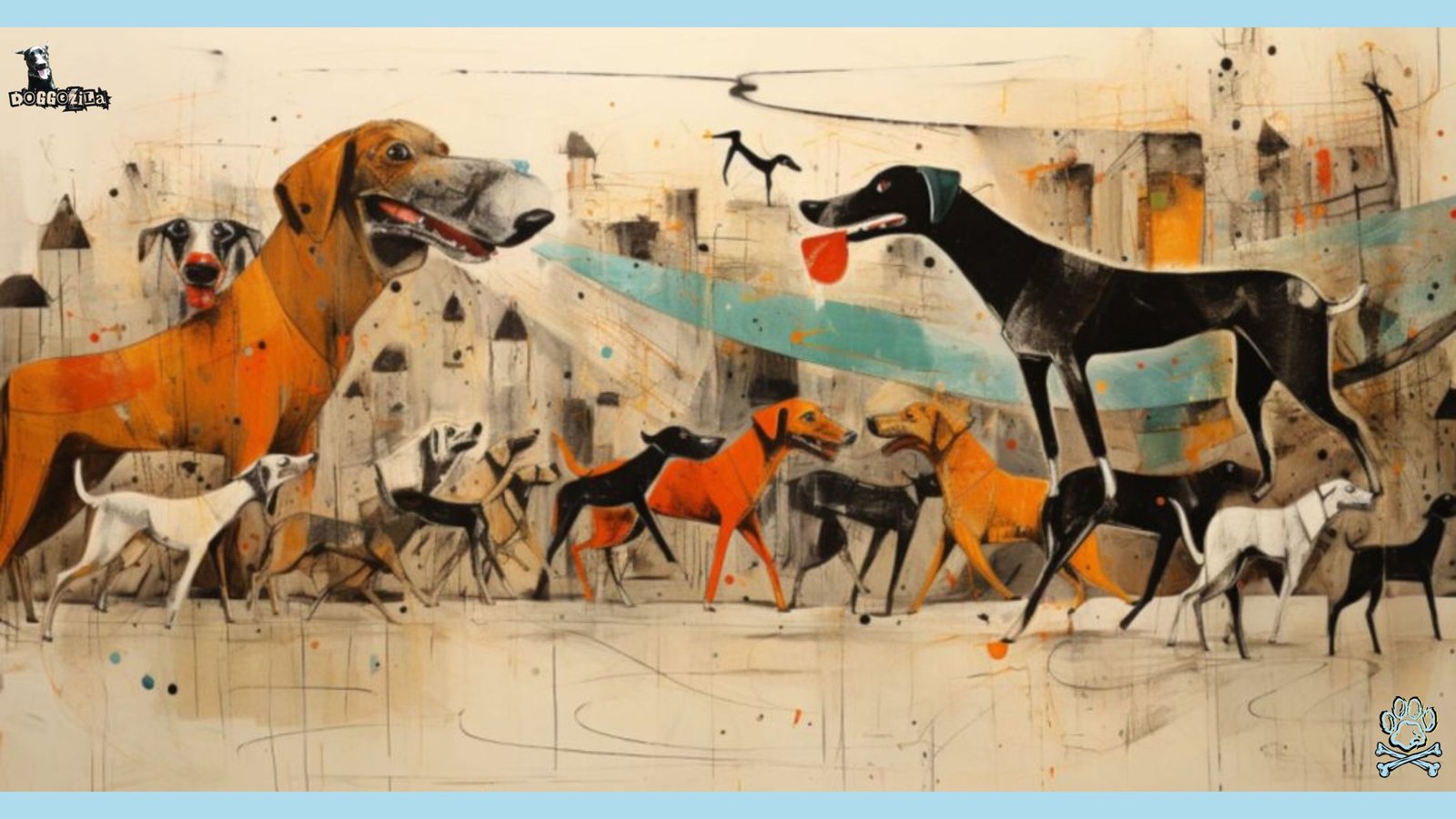
THE SIGNIFICANCE OF DOGS IN ANCIENT AND MODERN SOCIETIES
Dogs played a vital role in ancient and modern societies. Their importance went beyond practical uses. They served as symbols of power and social status. Dogs also embodied cultural beliefs and values. Their roles were deeply intertwined with human civilization’s fabric. In ancient times, dogs were associated with royalty and nobility. Their presence in art, like Roman coins, showed wealth and authority. Images of dogs with rulers and deities highlighted dogs’ elevated status. They conveyed messages of power and legitimacy.
Dogs as Embodiment of Cultural Values
Dogs also embodied cultural ideals and values. Mythological tales and folklore praised dogs’ loyalty, bravery, and companionship. These stories reflected societies’ prized qualities. Many cultures viewed dogs as models of proper conduct. They used dog stories to teach life lessons.
Tales of dogs sacrificing themselves for humans reminded people about loyalty and selflessness’ importance. Dogs were revered for guarding homes and families. They symbolized protection and guidance. Ancient societies believed dogs possessed mystical powers to ward off evil spirits.
Dog statues and amulets were common for this spiritual purpose. In modern times, dogs maintain cultural significance. They serve as service animals, police dogs, and therapy companions. Dogs’ unconditional love and loyalty make them cherished family members worldwide. Their symbolic roles endure despite societal changes.
The Enduring Significance of Dogs in Modern Times
The significance of dogs in human societies has not diminished with the passage of time. In modern times, dogs continue to play important roles as companions, working animals, and symbols of cultural identity. From the popularity of dog shows and breed-specific events to the continued presence of dogs in literature, art, and popular culture, the impact of these creatures on human society remains as strong as ever.
🔑 Key Points: The significance of dogs in ancient and modern societies extends beyond their practical roles, encompassing their symbolic associations with power, status, and cultural values, as well as their enduring impact on human civilization.
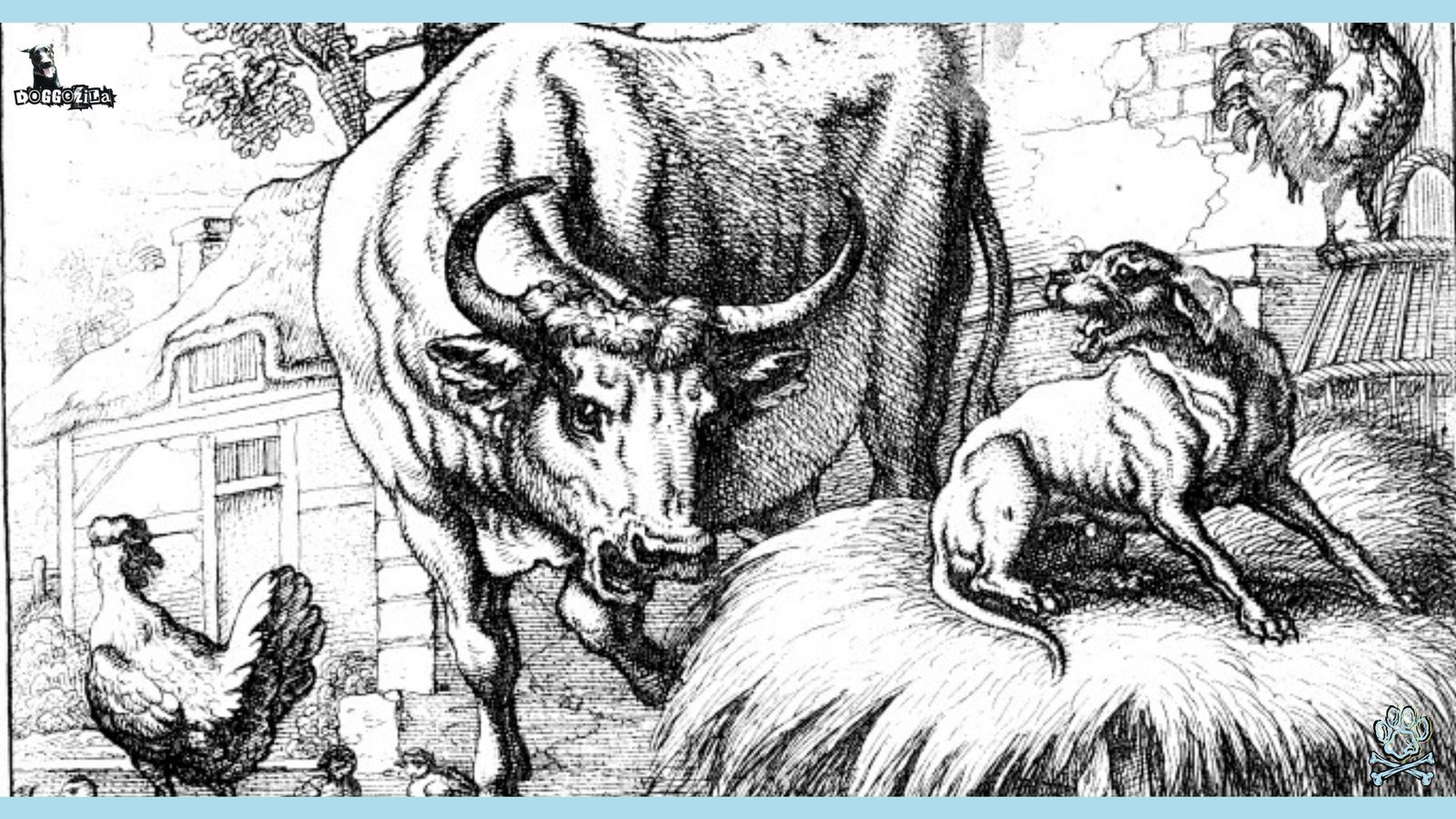
UNDERSTANDING DOGS’ BEHAVIOR: FROM EARLY DAYS TO MODERN TIMES
To fully appreciate the role of dogs in human society, it is essential to understand their behavior and how it has evolved over time. From their early days as wolf-like animals to their modern-day roles as companions and working dogs, the behavior of canines has been shaped by a complex interplay of genetic, environmental, and cultural factors. In the early stages of domestication, dogs likely exhibited behaviors that were similar to those of their wild ancestors. These behaviors, such as hunting, scavenging, and pack structure, were gradually modified through the process of domestication, as dogs adapted to life alongside humans.
The Impact of Human Interaction on Dog Behavior
Dogs have become very close to humans over time. Their behavior changed based on what humans wanted. Breeding and training shaped their behaviors. Distinct breeds developed certain traits. Today, we understand dog behavior better through research. Scientists study how dogs communicate with each other. They look at training methods’ effects on behavior. This gives insights into dogs’ minds.
🔑 Key Points: Understanding how dog behavior evolved is key. It helps appreciate the dog-human relationship. It promotes positive interactions between species.
A Quick Summary on How Dog Mythology Helps Explain Domestication
Our exploration of Dog Mythology unveiled intriguing insights. We discovered the deep connection between humans and dogs. This article also traced the origins and cultural significance of this bond. We learned how dogs evolved from symbolic companions. They became practical helpers in ancient societies. We saw mystical guardian dog roles across cultures.
This shed light on the profound human-dog relationship. We learned a lot from Dog Mythology. It taught us to appreciate our loyal dog friends. Dogs have been with humans for a long time. As we study canine mythology more, we must respect dogs’ cultural importance. Their historical value in our lives is invaluable.
Thank you for joining us on this enlightening journey.
May the bond between humans and dogs stay strong for many years.









